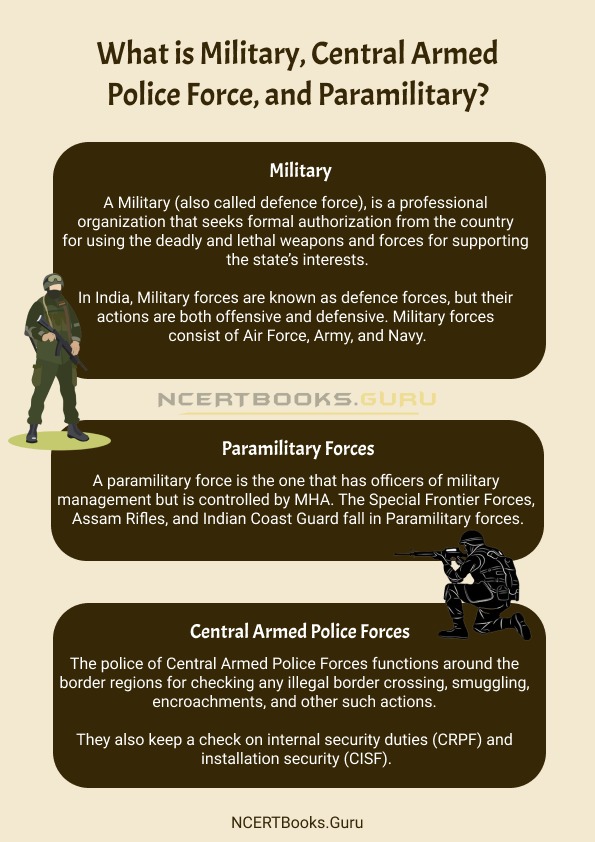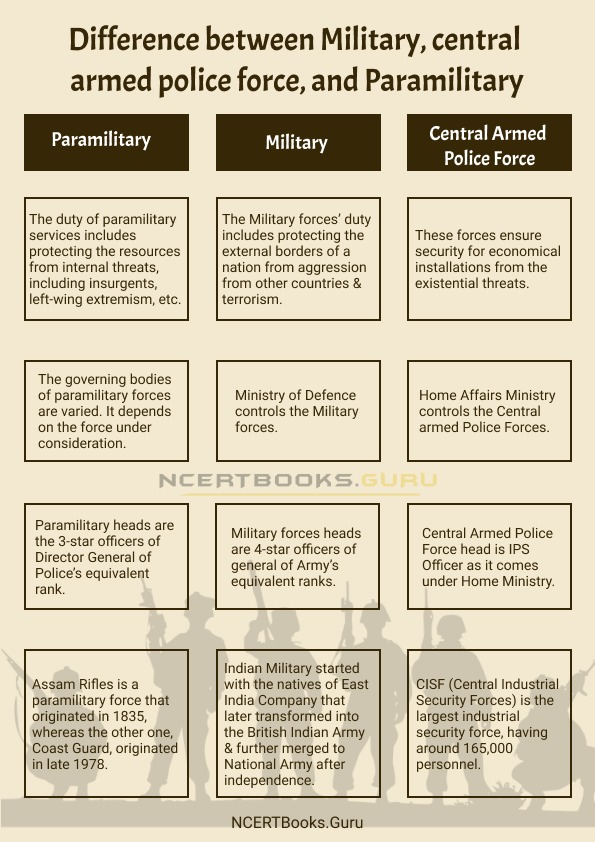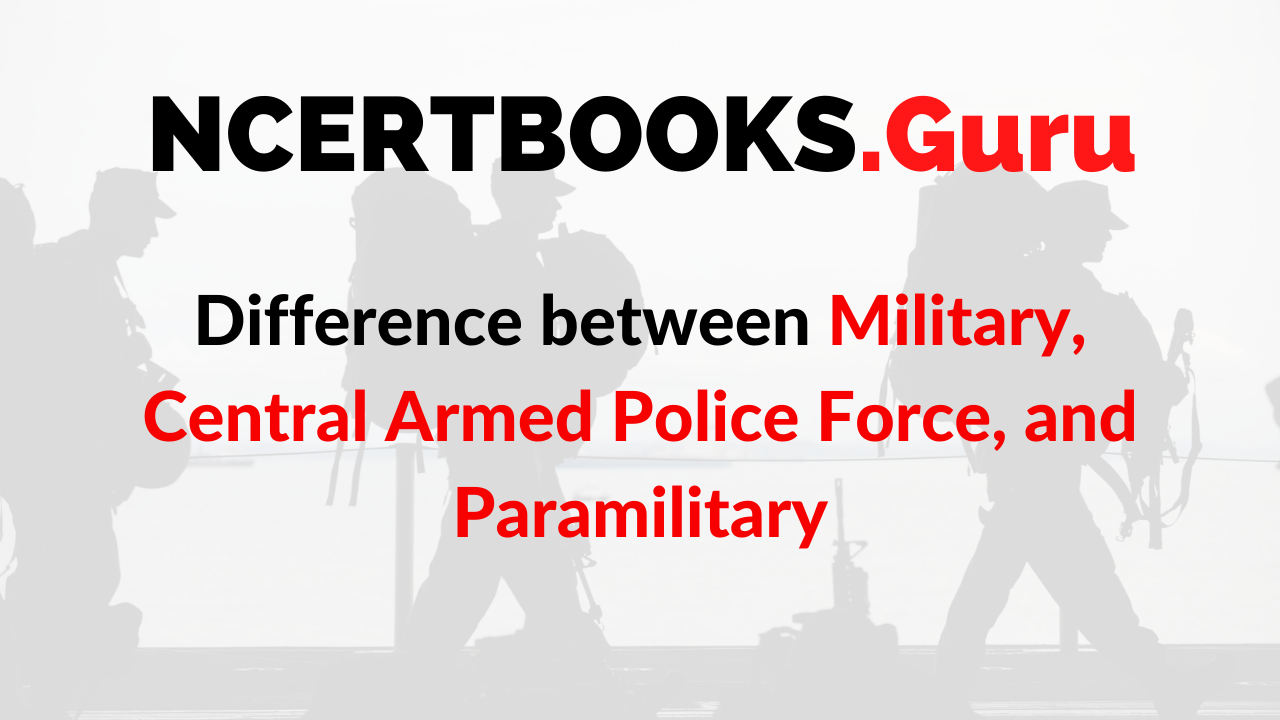Military and Paramilitary are two very confusing terms for most of us. With each passing year, defence forces rapidly transformed and evolved for better care assurance of martyr families.
Military (also known as defence forces) of a nation contains the Army, Air Force, and navy force of the country. On the other hand, the Central Armed Forces constitute SSB, CISF, ITBP, CRPF, and BSF. The Special Frontier Force, Assam Rifles, and Coast Guards are the part of paramilitary forces.
You can also find differences between articles on various topics that you need to know. Just tap on the quick link available and get to know the basic differences between them.
What is the difference between Military, Central Armed Police Force, and Paramilitary?
All three are three different forces, have different regulatory budgets, and work on different domains.
Military
A Military (also called defence force), is a professional organization that seeks formal authorization from the country for using the deadly and lethal weapons and forces for supporting the state’s interests. In India, Military forces are known as defence forces, but their actions are both offensive and defensive. Military forces consist of Air Force, Army, and Navy.
Paramilitary Forces
A paramilitary force is the one that has officers of military management but is controlled by MHA. The Special Frontier Forces, Assam Rifles, and Indian Coast Guard fall in Paramilitary forces. The State Reserve Police Forces also come under Paramilitary Forces. Paramilitary forces seek special provisions of the government’s laws for operating in Civil Authorities’ aid, just like the Armed Forces. As they lack the police powers, they are only functional whenever a state government declares any area as a disturbed one.
Central Armed Police Forces
The police of Central Armed Police Forces functions around the border regions for checking any illegal border crossing, smuggling, encroachments, and other such actions. They also keep a check on internal security duties (CRPF) and installation security (CISF). Across India, there are 5 CAPFs present: Central Industrial Security Forces, Central Reserve Police Force, Indo-Tibetan Border Force, Shashastra Seema Bal, and Border Security Force.

Difference between Military, central armed police force, and Paramilitary
| Paramilitary | Military | Central Armed Police Force |
| The duty of paramilitary services includes protecting the resources from internal threats, including insurgents, left-wing extremism, etc. | The Military forces’ duty includes protecting the external borders of a nation from aggression from other countries and terrorism. | These forces ensure security for economical installations from the existential threats. They also function near the borders for checking illegal crossings, smuggling, encroachments, and other such actions. |
| The governing bodies of paramilitary forces are varied. It depends on the force under consideration. Example – Ministry of Home Affairs control Assam Rifles and Ministry of Defence control Coast Guards | Ministry of Defence controls the Military forces. | Home Affairs Ministry controls the Central armed Police Forces. |
| Paramilitary heads are the 3-star officers of Director General of Police’s equivalent rank. | Military forces heads are 4-star officers of general of Army’s equivalent ranks. | Central Armed Police Force head is IPS Officer as it comes under Home Ministry. A CAPF cadre can also reach the post of Police’s Assistant Director General, but the Director General post reserves for only IPS. |
| Assam Rifles is a paramilitary force that originated in 1835, whereas the other one, Coast Guard, originated in late 1978. | The current version of Indian Military started with the natives of East India Company that later transformed into the British Indian Army and further merged to National Army after independence. | CISF (Central Industrial Security Forces) is the largest industrial security force, having around 165,000 personnel. |

